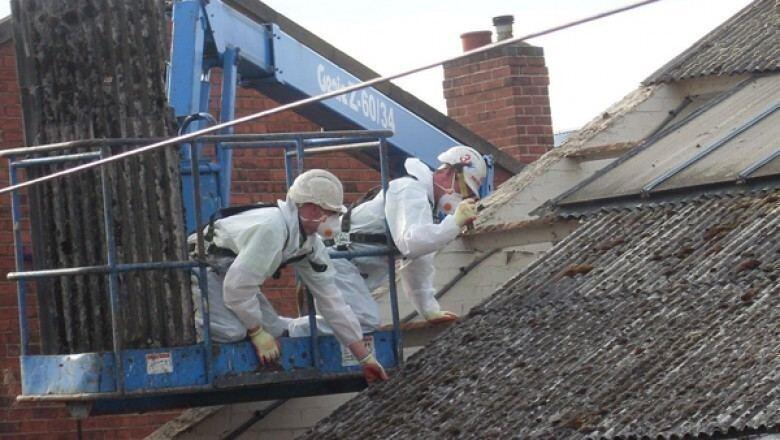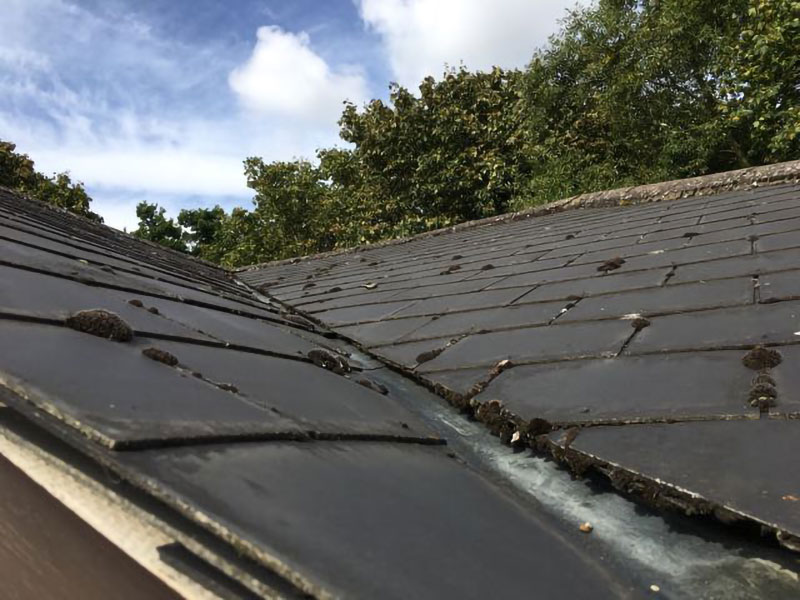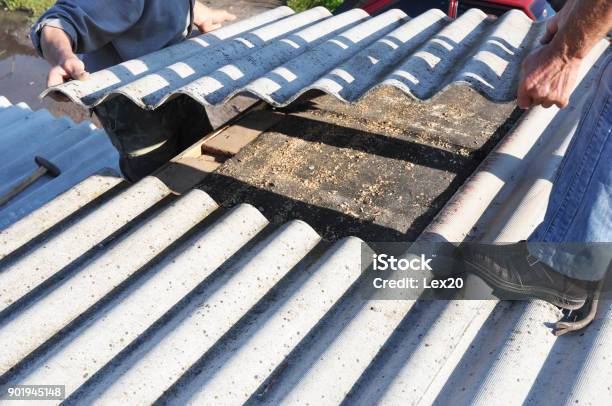Asbestos Management Plans For Roofs Removal And Disposal Of Asbestos
Asbestos management plans are important tools for the safe dealing with and management of asbestos materials in various environments. With the health risks associated with asbestos exposure, including lung disease and different critical respiratory circumstances, having a comprehensive management plan is crucial for any facility that may contain asbestos.
The creation of asbestos management plans entails a radical assessment of the premises the place asbestos could be current. This consists of figuring out the types of materials that comprise asbestos and evaluating their condition. Regular inspections are essential as a end result of the integrity of asbestos-containing materials can degrade over time, raising the danger of airborne asbestos fibers.

Once the assessment is performed, the plan must include clear procedures for managing asbestos safely. This consists of guidelines on how to handle, preserve, and, if necessary, remove asbestos-containing materials. Proper labeling and signage are also essential to make certain that workers and visitors are aware of areas which will pose a risk.
Indoor Air Quality Post Asbestos Roof Removal Removal And Disposal Of Asbestos
Training and schooling play a big function within the successful implementation of asbestos management plans. Employees who might come into contact with asbestos must be educated about the hazards, safe work practices, and emergency procedures. Regular training sessions may help hold safety on the forefront of office culture.
The management plan should define specific obligations for employees and management. Designating an asbestos coordinator can streamline the method of monitoring, reporting, and communicating about asbestos-related points. This particular person serves as a point of contact for questions and concerns regarding asbestos safety.
Documentation is a key aspect of asbestos management plans. Maintaining correct information of inspections, incidents, training, and maintenance actions is essential for accountability and ongoing risk assessment. This documentation can also prove invaluable in case of regulatory inspections or legal inquiries.
Asbestos Risk Mitigation During Roofing Projects Diy Awareness For Asbestos Removal
In addition to figuring out materials and implementing safe dealing with practices, the plan should define response protocols for asbestos-related emergencies. Long-Term Effects Of Asbestos Roof Removal. These protocols should include measures to follow in the event of a cloth breach or suspected fiber launch. Providing clear steps might help mitigate risks and guarantee swift motion
Periodic evaluate and updating of the asbestos management plan are very important to mirror any modifications in regulations, office circumstances, or materials current. Continuous enchancment is important to adapt to new info or technologies related to asbestos safety. Stakeholders should be involved in this process to ensure that the plan remains related and effective.
Asbestos Regulations Affecting Roof Removal Residential Asbestos Removal Services
Compliance with local and national regulations concerning asbestos is non-negotiable. Organizations should stay informed about applicable legal guidelines and guidelines that govern asbestos dealing with and disposal. This helps avoid legal penalties and enhances the general safety tradition inside the organization.
Community awareness is another necessary think about effective asbestos management plans. Engaging with local authorities, health agencies, and the community can foster a larger understanding of asbestos-related issues. This collaboration ensures that all events are knowledgeable about potential risks and safety measures in place.
Asbestos management plans do not operate in isolation; they're part of a broader health and safety strategy. By prioritizing the well-being of employees and the encircling community, organizations can contribute to a safer environment. The integration of asbestos management with other safety protocols allows for a holistic approach to office safety.
Asbestos Removal Project Completion Protocols Diy Awareness For Asbestos Removal
The objective of an asbestos management plan is not only compliance but in addition proactive risk management. By successfully identifying hazards and implementing mitigation methods, organizations can considerably reduce the chance of asbestos exposure. This commitment to safety in the end protects both employees and the bottom line.
Effective communication in regards to the asbestos management plan is important for fostering a culture of safety. Clear dissemination of data ensures that everyone understands the risks and the measures in place to mitigate them. Providing clear reporting channels encourages staff to voice issues and contribute to safety efforts.
Finally, the importance of periodic monitoring cannot be overstated. Regular audits of the asbestos management plan assist identify areas for improvement and confirm that safety measures are followed. Continuous analysis creates a feedback loop, selling a safer working environment.
In summary, asbestos management plans serve as essential frameworks for controlling and managing the risks associated with asbestos exposure. Through thorough assessment, effective communication, ongoing training, and common updates, organizations can create safe environments for his or her staff and the community. The focus should all the time be on proactive measures, compliance with regulations, and a strong safety culture.
Health Surveillance For Asbestos Workers Diy Awareness For Asbestos Removal
By guaranteeing that each facet of the plan is well-executed, organizations can significantly decrease the risks tied to asbestos materials. This ongoing dedication to safety will not only protect people but additionally enhance organizational popularity and belief.
Continuous adaptation and refinement of asbestos management plans will ultimately result in a extra knowledgeable workforce that prioritizes safety above all. Such a culture is crucial for achieving long-term safety objectives and making certain the health of all stakeholders involved.
Post Asbestos Roof Removal Cleaning What To Do If You Find Asbestos
Ultimately, the well-being of employees and the environment ought to guide the development and implementation of any asbestos management strategy. By remaining vigilant and diligent of their method, organizations can navigate the complexities of asbestos management effectively.
In conclusion, the roadmap for asbestos safety is challenging but important. A fastidiously crafted and executed asbestos management plan, complete with thorough assessments, communication protocols, and ongoing education, lays the groundwork for a safe and compliant workplace. This proactive strategy fosters a protective environment for all these concerned, solidifying the dedication to safety for the future.
- Asbestos management plans outline protocols for identification, assessment, and management of asbestos-containing materials in numerous settings, notably in buildings.
- Regular inspections and risk assessments are important parts of an asbestos management plan, guaranteeing ongoing monitoring and up to date data regarding potential hazards.
- Training for personnel on asbestos awareness and safety measures is essential, ensuring that employees are knowledgeable about the risks and procedures related to asbestos exposure.
- Development and maintenance of an inventory of asbestos locations, types, and conditions enable for knowledgeable decision-making when planning renovations or demolitions.
- Emergency response procedures tailor-made for asbestos-related incidents assist decrease health risks throughout sudden situations involving asbestos disturbance.
- Effective communication strategies within an organization inform all stakeholders of asbestos management plans, highlighting duties and inspiring a tradition of safety.
- Documentation of all asbestos-related activities, including removal, encapsulation, or repair, is necessary for compliance with regulatory requirements and for future reference.
- Stakeholder engagement, together with occupants and neighboring properties, is important to boost awareness and tackle issues relating to asbestos management and safety practices.
- Integrating asbestos management plans with total health and safety insurance policies can create a cohesive method to office safety and environmental health.
- Regular critiques and updates of the asbestos management plan ensure relevance and effectiveness, adapting to any modifications in regulations, building occupancy, or material situation.undefinedWhat are asbestos management plans?
Asbestos Roof Removal Machinery And Tools Costs Associated With Removal And Replacement

Asbestos management plans are paperwork that define tips on how to manage asbestos on a property. They detail the placement, condition, and types of asbestos-containing materials, together with strategies for safe monitoring, maintenance, and mitigation.
Why do I need an asbestos management plan?
An asbestos management plan is essential for safeguarding health and safety. It ensures that every one potential asbestos hazards are identified and managed appropriately, minimizing the chance of exposure to people on the property.
Cost-Effective Strategies For Asbestos Removal Removal Of Asbestos Roof In Area
Who is liable for creating an asbestos management plan?
Typically, the property owner or employer is answerable for creating and implementing an asbestos management plan. It is often really helpful to consult with qualified professionals or licensed asbestos surveyors to make sure compliance with regulations.

How usually should my asbestos management plan be reviewed? Impact Of Asbestos On Property Value In Sydney.
Regulatory Updates For Asbestos Roof Removal Commercial Roofing Contractor For Removal
Asbestos management plans must be reviewed a minimal of every 12 months or whenever significant adjustments occur on the property, corresponding to renovations or injury to areas containing asbestos. This ensures that the plan stays up-to-date and effective.
What should I do if my asbestos management plan identifies risks?
If risks are recognized, immediate motion should be taken based on the plan. This could embrace repair, encapsulation, or removal of asbestos materials by licensed professionals, together with notifying affected individuals concerning the risks and safety measures.
Can I manage asbestos points myself and not using a plan?
Environmentally Friendly Practices For Asbestos Disposal Cost Guide For Asbestos Removal
It just isn't advisable to administer asbestos issues and not utilizing a formal plan. Improper dealing with can lead to critical health risks and legal penalties. Consulting a certified professional is essential for safety and compliance with regulations.
How do I find a certified professional for my asbestos management plan?
To discover a qualified professional, look for licensed asbestos consultants or surveyors in your area. It is necessary to envision their certifications, experience, and critiques to ensure they meet regulatory requirements and have a great observe report of safety.
Asbestos Roofing Material Identification Costs Associated With Removal And Replacement
What happens if I don’t have an asbestos management plan?
Lack of an asbestos management plan can lead to non-compliance with local regulations, resulting in heavy fines, legal liability, and increased health risks for occupants. It is essential to have an effective plan in place to manage asbestos safely.
Is training required for those handling asbestos management plans?
Yes, people concerned in managing asbestos ought to obtain acceptable training. This contains understanding the risks, the specifics of the management plan, and safe work practices. Regular training ensures everybody is ready to answer potential asbestos points successfully.
click here now read this post here